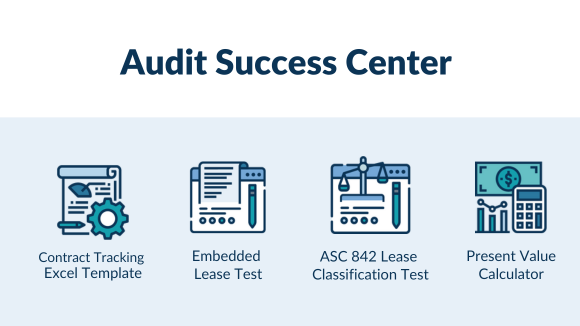Introduction to debt accounting
Debt is a sum one party is obligated to pay another party at a later date. Many different types of debt exist: money borrowed from a bank or other lending institution, such as a loan or note, debt securities for sale to outside parties, such as bonds, or even accrued expenses, such as salaries that have been earned but not yet paid. These arrangements have various features and terms for repayment which affect how they are measured and reported on financial statements.
Topic ASC 470 provides guidance on accounting for debt for entities reporting under US GAAP. The standard consists of six subtopics:
- Debt overall, addressing the determination of the classification of a debt arrangement
- Debt with conversion features and other options
- Mortgage loans
- Financing arrangements
- Modifications and extinguishments of debt
- Troubled debt and restructuring of debt arrangements
GASB Statement No. 34 (GASB 34) covers a broad range of subjects including the treatment of debt for state and local governments. The statement details the importance of reporting short-term and long-term debt in government-wide financial statements. GASB 34 also details important aspects of disclosure requirements, including the disclosure of the governmental entity’s debt activity during the year.
Financial statement recognition
Initial measurement and recognition
A debt transaction is recognized on the financial statements of an organization when an obligation officially exists. For the borrowing entity, debt is recorded on its settlement date, or the date the proceeds are received. Both the FASB and GASB require transparency of obligations in reporting; from the audit perspective, completeness of debt account balances is the most relevant assertion.
To correctly measure what a company owes, multiple factors must be considered. Some loans have special clauses or covenants that must be factored into the measurement. Interest may be charged in addition to the principal amount owed, or if no actual interest rate is stated, interest could be implied.
As repayment is generally a future event, debt is often measured at its present value. For debt issued solely for cash, the present value is presumed to be equal to the cash proceeds received, which may differ from the principal value of the debt instrument if the stated interest rate does not match the current market interest rate. When debt is issued in exchange for non-monetary assets, other factors might be considered when determining initial measurement. Many debt balances on the financial statements represent the discounted future cash outflows to factor in the time value of money.
Short-term vs. long-term classification
Debt is a liability, typically separated into short-term and long-term categories for financial reporting. Short-term debt represents debt due within the next 12 months. Short-term obligations are used for financing day-to-day operations, as the money borrowed is expected to be paid back relatively quickly. For example, a company may use a line of credit or even a bank overdraft to cover short-term expenses to pay the money back in the near future.
Long-term debt is due beyond the next 12 months. Organizations usually enter into such arrangements for larger purchases or strategic plans for expansion and diversification. Often, a long-term debt obligation will have a short-term portion representing the principal payments due over the next 12 months. As short-term and long-term debt are used differently in business, the distinction is important for the interpretation of financial statements.
Subsequent measurement and amortization
The liability initially recognized on the financial statements will be reduced as payments are made and the obligation is reduced. For a loan, generally, both principal and interest payments are periodically made throughout the term of the loan. For a debt instrument like a bond, the periodic payments might include both principal and interest or interest only with the principal payment carried on the balance sheet until paid off at the debt maturity date.
Debt may also impact the income statement in the form of interest expense. Interest is the cost of borrowing money. There are many reasons why it would be advantageous to delay payment for a large purchase or to get a loan to finance future plans. Interest is what must be paid for that benefit, and is recorded as an expense and a liability until the obligation is relieved.
Accrued interest is the aggregated periodic interest on debt that has not yet been paid. Interest is accrued to comply with the accrual basis of accounting, ensuring that debt transactions are recorded in the proper periods.
Types of debt
Secured vs. unsecured debt
Debt may be classified as secured or unsecured. A lending institution may impose certain requirements to feel comfortable loaning money to an organization. One such practice is to require the borrowing organization to pledge collateral in the form of property or assets, with the collateral having value enough to cover the amount of debt being issued if the borrower were to default.
If the debt is collateralized, it is called secured debt. Common items that provide this security to lenders include property, vehicles, equipment, and even financial securities and investments. Typically, if a loan is for the purchase of a specific asset, the asset will be used to secure the loan, as in the example of a mortgage for a house. If an organization pledges an asset as collateral for a loan and subsequently is not able to repay the debt, the collateral can be sold to repay the loan.
Unsecured debt is debt not guaranteed by an asset or collateral. Lenders consider an organization’s creditworthiness when deciding whether or not to grant a loan. If an organization has good credit, the lender may feel the risk of default is low enough to be comfortable with issuing unsecured debt.
Notes payable and loans payable
One of the most common types of debt reported on a company’s financial statements is notes or loans payable. A note payable represents debt occurring from borrowing money, usually in the form of a promissory note or debt agreement. The arrangement will establish an amount of money to be borrowed, time period over which the loan is to be paid back, and the interest rate charged. Loans may be secured or unsecured. These accounts are usually a long-term liability, with the short-term portion representing the principal due over the next year.
Organizations typically issue notes to cover purchases of large assets. Even an individual usually does not have enough cash to purchase a car, house or large appliance. Borrowing cash and paying over time allows organizations to obtain assets to use in their day-to-day operations without having all of the required cash on hand upfront. A loan can also be obtained to increase the amount of capital an organization has to put into growing the organization.
Amortization of a loan
In a more simple loan agreement, a few things are recognized in the financial statements:
- The cash payments being made
- The interest expense being accrued
- The amortization (i.e., reduction) of the liability as the debt is reduced over the term.
The required cash payments are usually outlined in the debt agreement. The interest expense is accrued as a factor of the remaining balance of the debt, the time period elapsed, and the stated interest rate. At each required payment interval, the borrower will pay the required principal to reduce the outstanding debt and the accrued interest.
Bonds payable
Another common type of debt reported on the financial statements is bonds payable. Borrowing money through a loan is one way of raising capital, but issuing debt securities, such as bonds, is another. Issuing securities is still borrowing, though, in that the organization receives cash which must be repaid at a later date.
Issuing bonds rather than taking out a loan can be attractive to organizations for many reasons. Bonds allow for the borrowing of large sums at low-interest rates. They also give organizations greater freedom as bank loans can often be more restrictive. Additionally, the interest payments made for some bonds can also be used to reduce the amount of corporate taxes owed.
Payment schedules for bonds are different from loans. The organization that issued the bond makes periodic payments to bondholders that go towards the interest owed on the bonds. Payments for the principal amount of the bonds are made at regular intervals or the entire principal amount of the bond is paid off at the date of maturity.
Discounts and premiums
Most of the time, a bond’s stated value is not equal to its current market price at the date of issuance. For that reason, it will be issued at a premium or discount. Bonds will have a stated rate of interest dictating the amount of periodic interest payments. However, market interest rates change very frequently, so the interest rate stated on the bond may be different from the current interest rate at the time of bond issuance. Bonds can be sold below the current market value (at a discount) or above the current market value (at a premium).
Summary
Debt is one of the main methods companies have to raise capital. The most common forms of debt are the issuance of a promissory note for a large purchase, loans from a bank, and the sale of debt securities like bonds. Often a bank loan will be secured by an asset or assets an organization pledges as collateral. Selling bonds is a way of borrowing money with relatively fewer restrictions.
Loans may have various features, terms, or covenant requirements. Debt balances need to reflect the full picture of an organization’s financial commitments at a point in time, so this is done in various ways depending on the form of debt.











